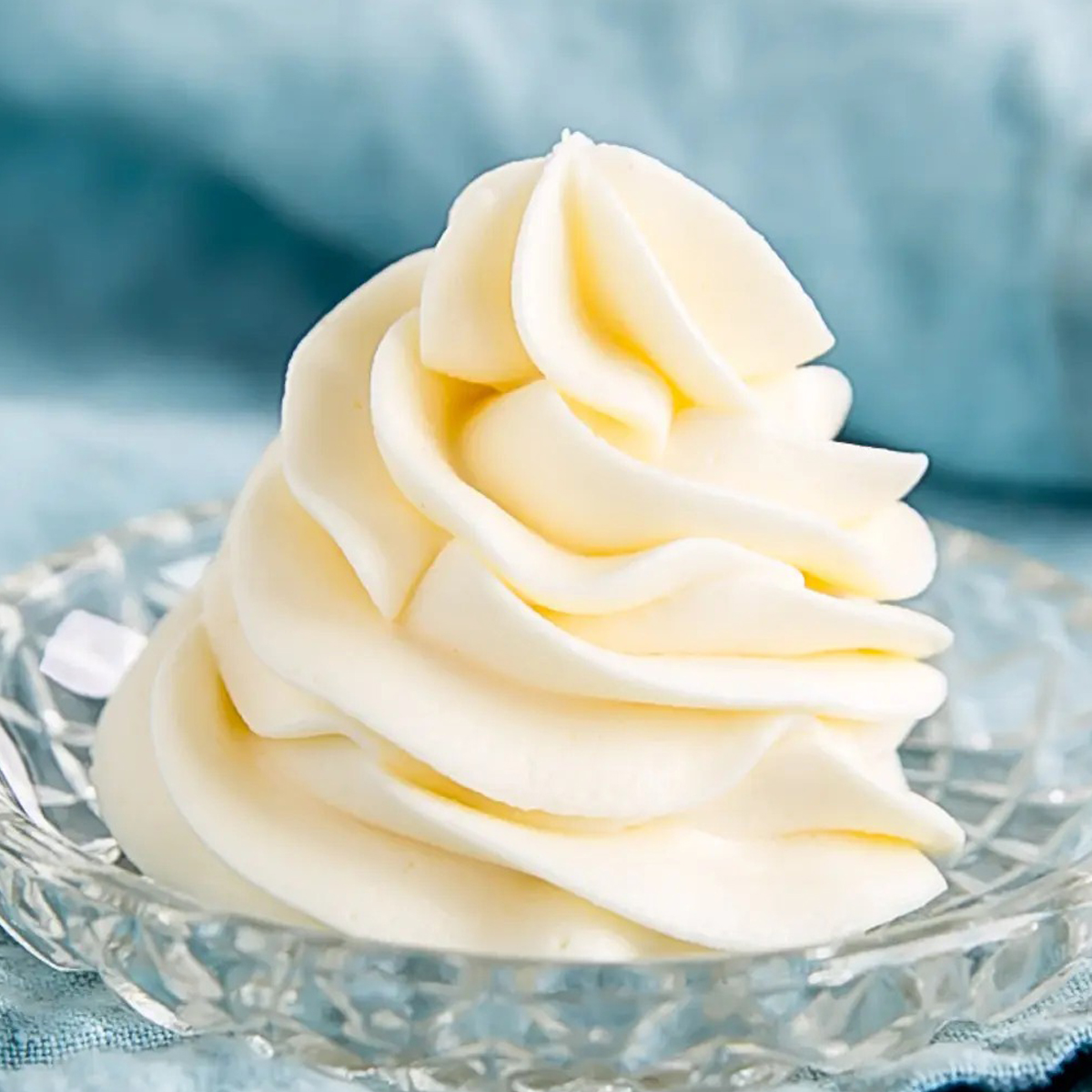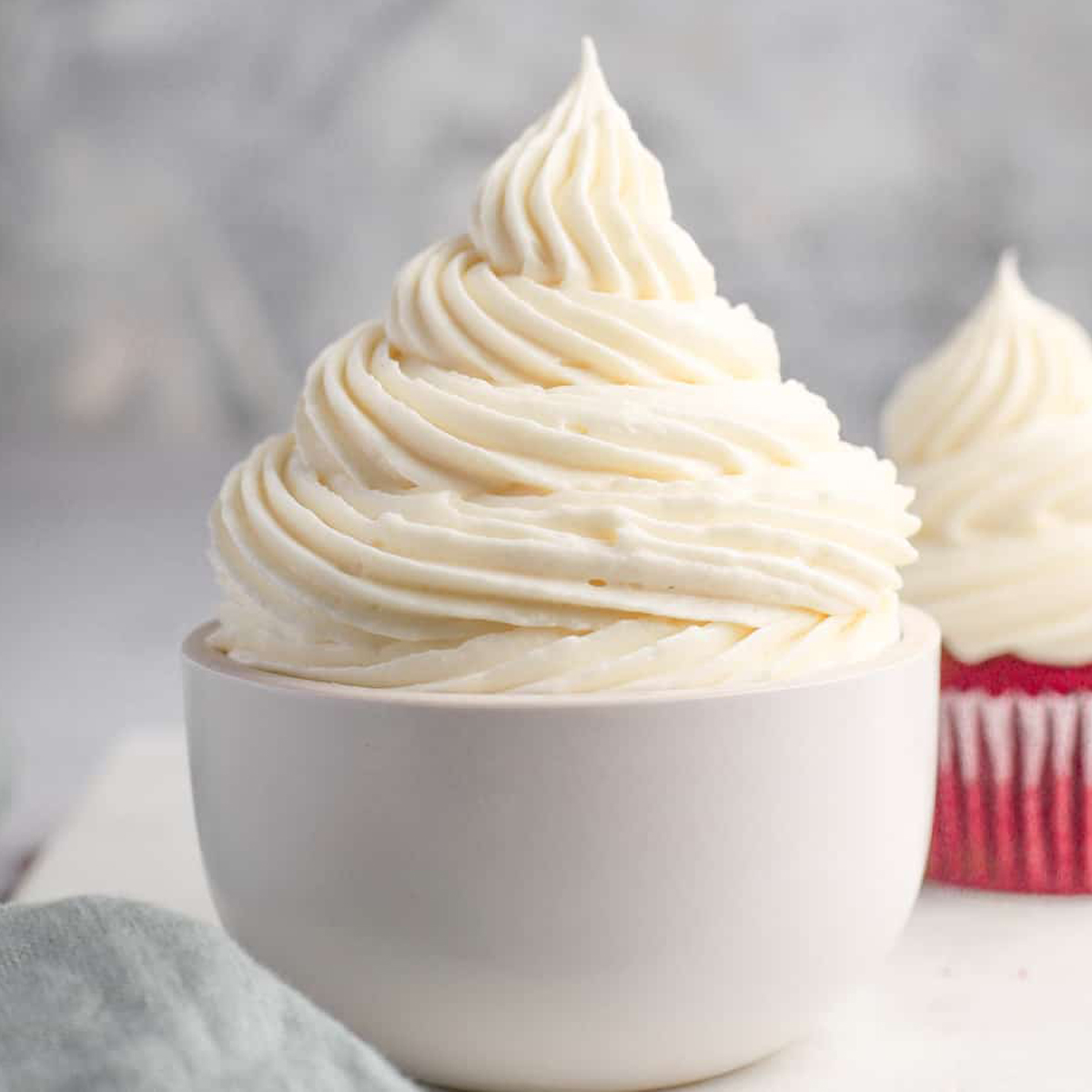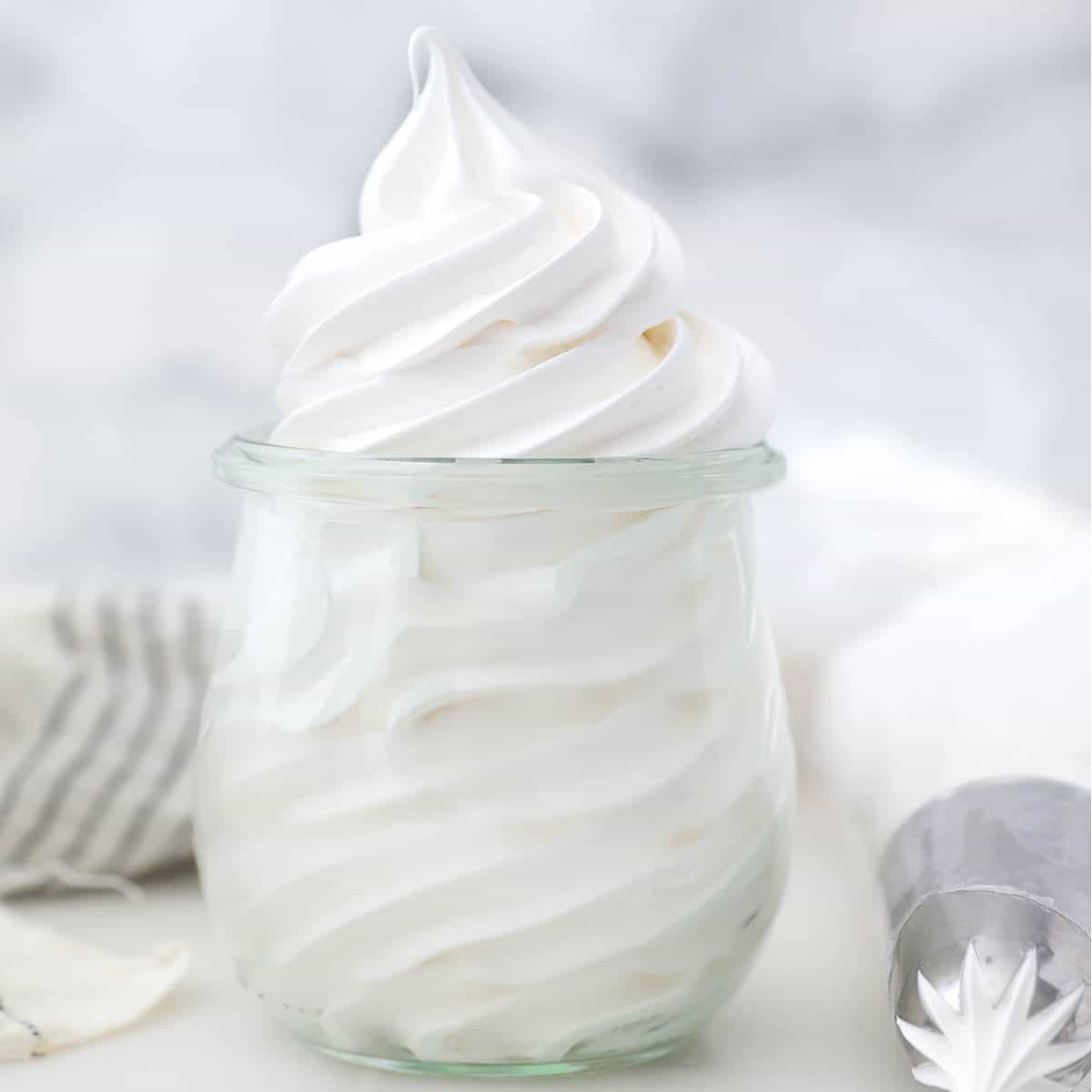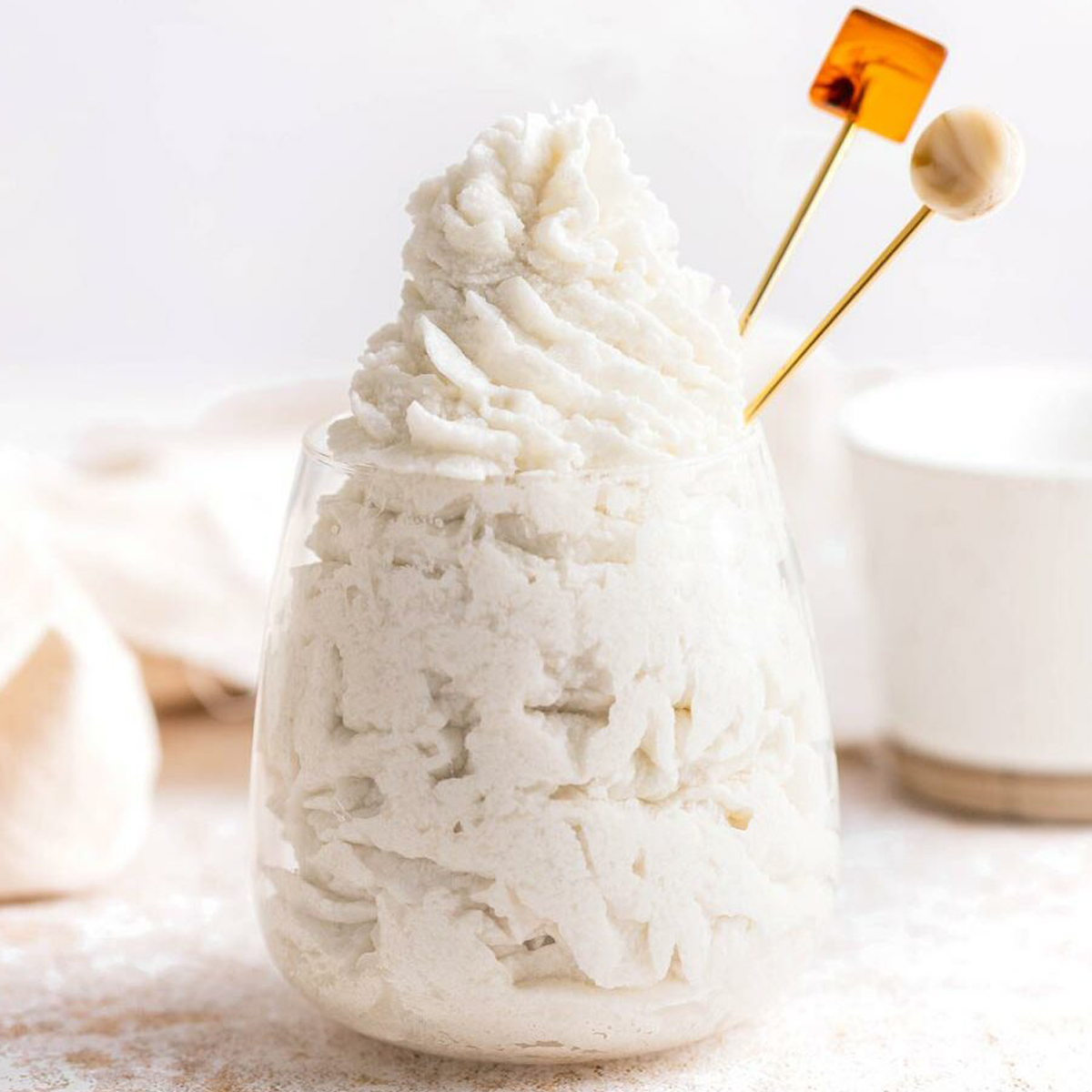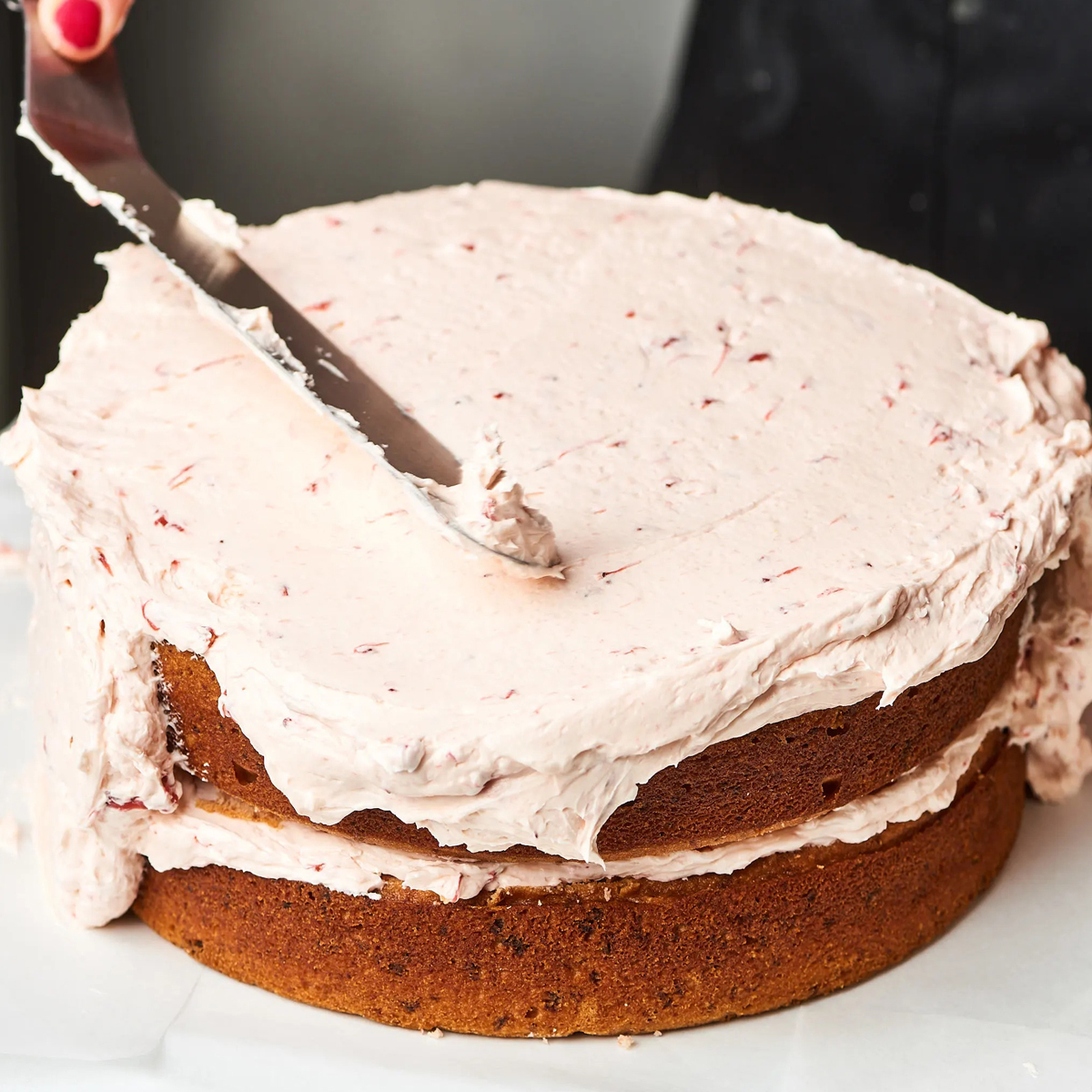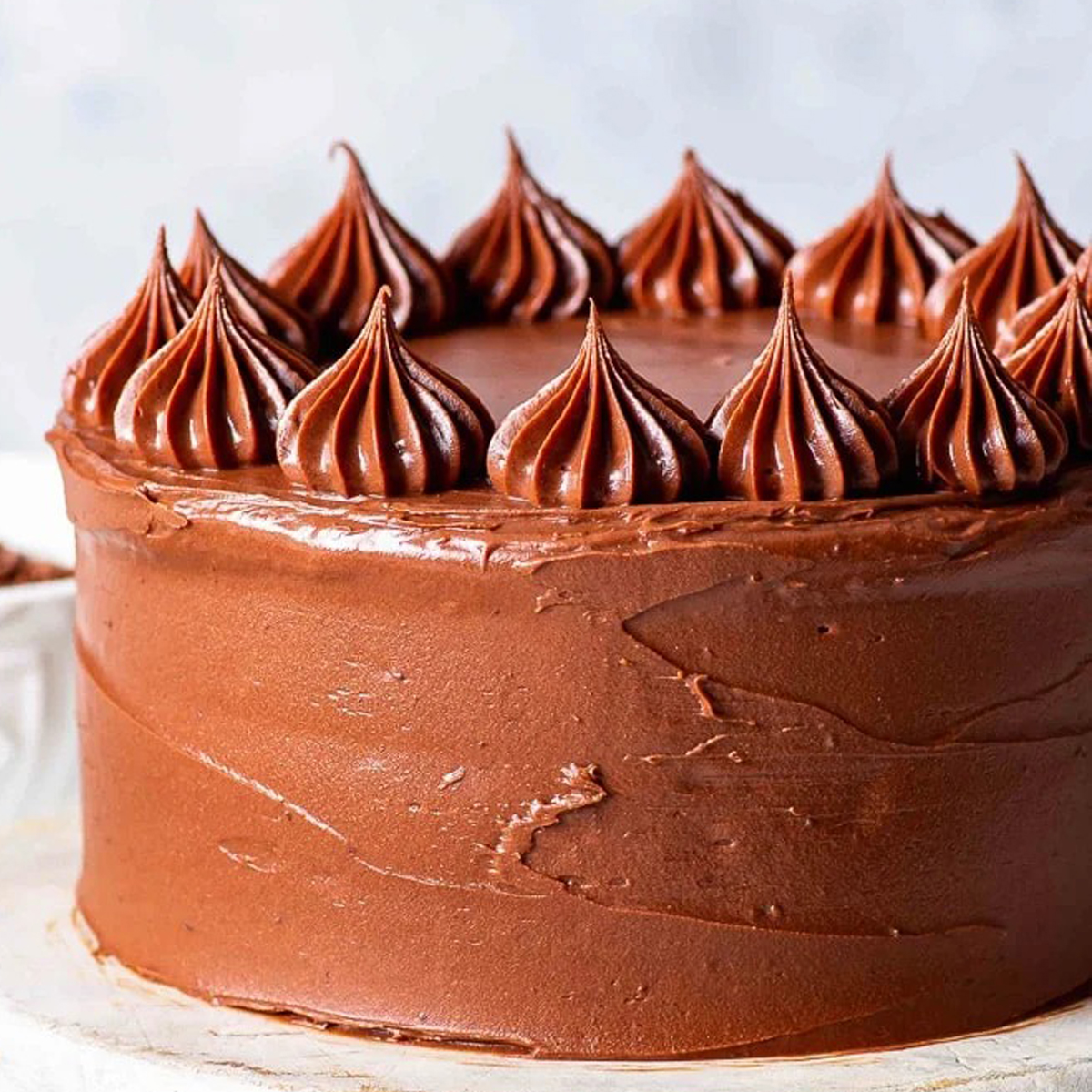Ermine Frosting, also known as boiled milk frosting or flour frosting, is a classic and time-tested frosting that’s been a favorite among bakers for generations. Unlike the more common buttercream frostings, Ermine Frosting has a unique and luxurious texture that is light, velvety, and not overly sweet. What sets it apart is its use of a cooked roux base made from flour and milk, which is then blended with butter and sugar to create a smooth, creamy, and delightful frosting. With its silky consistency and versatility, Ermine Frosting is a fantastic choice for adorning cakes, cupcakes, and other baked treats, offering a sophisticated and balanced sweetness that pairs beautifully with a variety of flavor profiles.

What is Ermine Frosting?
Ermine Frosting, also known as cooked flour frosting, boiled milk frosting, or heritage frosting, is a classic frosting with a unique preparation method. It is characterized by its smooth, creamy, and velvety texture, making it a delightful choice for cake and cupcake decoration. Ermine Frosting is distinct from traditional buttercream frostings, as it doesn’t rely on powdered sugar as its primary sweetener.
Here’s how Ermine Frosting is typically made:
- Cooked Roux: The frosting begins with a cooked roux, which is made by heating flour and milk together until it thickens into a smooth, pudding-like consistency. This step is crucial for achieving the frosting’s unique texture.
- Cooling: After the roux is cooked, it is essential to let it cool completely. This ensures that the frosting won’t have a starchy taste or be too warm when combined with the other ingredients.
- Butter and Sugar: Softened butter and granulated sugar are beaten together until fluffy and creamy.
- Incorporating the Roux: Once the roux has cooled, it is gradually incorporated into the butter-sugar mixture. This creates a rich, creamy, and luxurious frosting with a balanced sweetness.
- Flavorings: You can add flavorings such as vanilla extract or other extracts to enhance the taste of the frosting, depending on your preference.
Ermine Frosting is less sweet than traditional American buttercream, making it an excellent choice for those who prefer a frosting that’s not overly sugary. Its smooth texture makes it ideal for spreading, piping, and decorating cakes and cupcakes. It pairs well with various cake flavors and can be tinted with food coloring for creative and colorful designs.
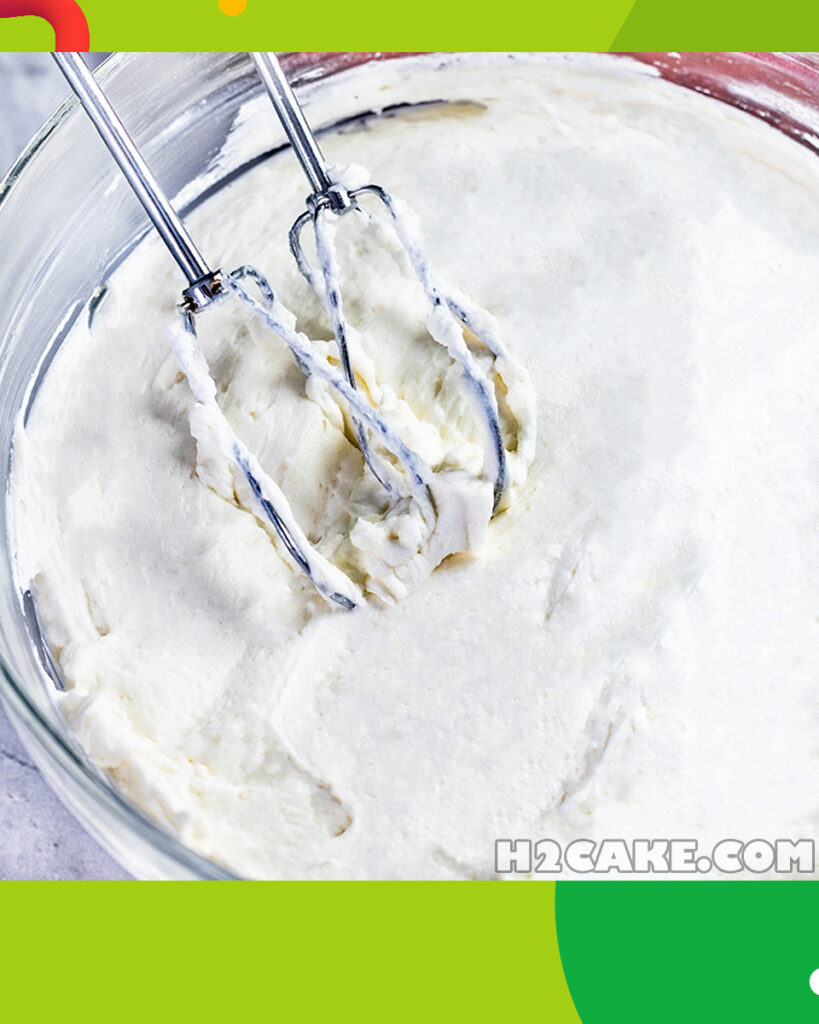
Why you will love Ermine Frosting?
There are several reasons why you’ll love Ermine Frosting:
- Smooth and Creamy Texture: Ermine Frosting has a luxurious, velvety texture that’s incredibly smooth and creamy. It spreads and pipes beautifully, making it perfect for decorating cakes and cupcakes with precision and elegance.
- Balanced Sweetness: Unlike some other frostings that can be overly sweet, Ermine Frosting has a balanced sweetness. It’s sweet enough to satisfy your dessert cravings but not overwhelmingly so, allowing the flavors of the cake to shine through.
- Light and Fluffy: This frosting is delightfully light and fluffy, which adds a pleasant contrast to denser cake layers. It creates a harmonious balance of textures in each bite.
- Versatile: Ermine Frosting is highly versatile. You can easily customize it by adding various flavor extracts, such as vanilla, almond, or citrus, to create different flavor profiles. It’s also a great canvas for incorporating natural fruit purees or chocolate for unique variations.
- Not Too Rich: While it’s decadent, Ermine Frosting is not as rich as some other butter-based frostings. This makes it a suitable choice for those who prefer a slightly lighter frosting that doesn’t overwhelm the palate.
- Time-Tested Tradition: Ermine Frosting is a classic frosting that has stood the test of time. It’s been cherished by bakers for generations, and its timeless appeal continues to make it a favorite among dessert enthusiasts.
- Great for All Occasions: Whether you’re baking for a special celebration, a casual get-together, or just a sweet treat for yourself, Ermine Frosting complements a wide range of occasions and desserts.
- Excellent for Decorative Work: Its smooth consistency allows for intricate and detailed cake decorations, making it a top choice for cake decorators and home bakers alike.
- Easy to Work With: Making Ermine Frosting doesn’t require advanced skills, and it comes together relatively easily. It’s a forgiving frosting for beginners and a reliable choice for experienced bakers.
In summary, Ermine Frosting offers a delightful combination of texture and flavor, making it a beloved choice for frosting cakes and cupcakes. Its versatility and balanced sweetness ensure that it pairs well with a variety of cake flavors and satisfies a wide range of tastes, making it a frosting worth exploring and enjoying.
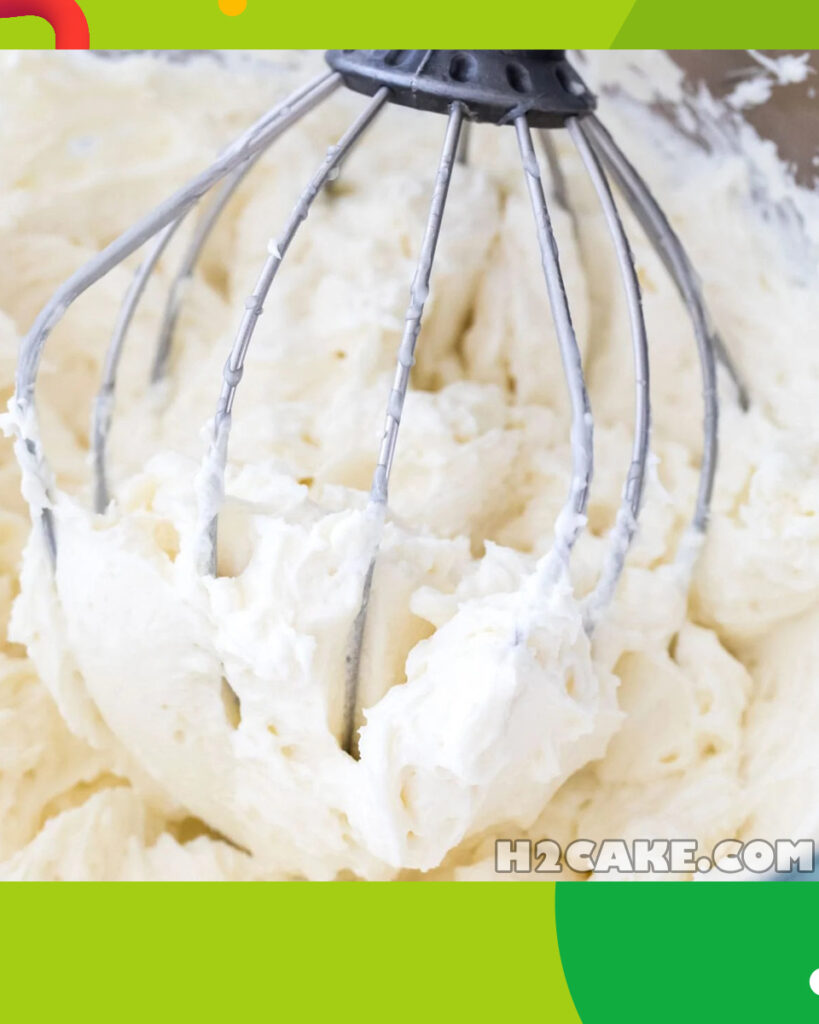
Ermine Frosting Recipe
Ingredients:
- 5 tablespoons all-purpose flour
- 1 cup whole milk
- 1 cup unsalted butter (2 sticks), softened to room temperature
- 1 cup granulated sugar
- 1 teaspoon pure vanilla extract (or your preferred flavor extract)
Instructions:
- Prepare the Roux:
- In a small saucepan, whisk together the flour and 1/4 cup of milk until you have a smooth, lump-free paste.
- Gradually whisk in the remaining 3/4 cup of milk until the mixture is well combined.
- Cook the Roux:
- Place the saucepan over medium heat. Continuously whisk the mixture as it heats.
- Bring the mixture to a gentle boil. You will start to see it thicken. Continue to cook and whisk for about 1-2 minutes until it has the consistency of thick pudding.
- Cool the Roux:
- Remove the saucepan from the heat and transfer the roux to a heatproof bowl.
- Cover the surface of the roux with plastic wrap or parchment paper to prevent a skin from forming.
- Allow the roux to cool completely to room temperature. This is a crucial step to ensure the frosting is smooth and not grainy.
- Cream the Butter:
- In a separate mixing bowl, beat the softened butter with an electric mixer on medium-high speed until it’s light and fluffy. This takes about 2-3 minutes.
- Add Sugar:
- Gradually add the granulated sugar to the creamed butter, continuing to beat until the mixture is well combined and fluffy.
- Incorporate the Roux:
- Once the roux has cooled completely, add it to the butter-sugar mixture.
- Beat the mixture on medium-high speed until it’s creamy, smooth, and resembles traditional frosting. This can take a few minutes.
- Add Flavor Extract:
- Mix in the vanilla extract or your preferred flavor extract for added taste.
- Frost Your Cake or Cupcakes:
- Your Ermine Frosting is now ready to use. Frost your cooled cakes or cupcakes as desired.
This recipe typically yields enough frosting to cover a two-layer 8-inch cake or about 24 cupcakes, depending on how generously you frost them. Adjust the quantities as needed for your specific baking project. Enjoy your classic and delicious Ermine Frosting!
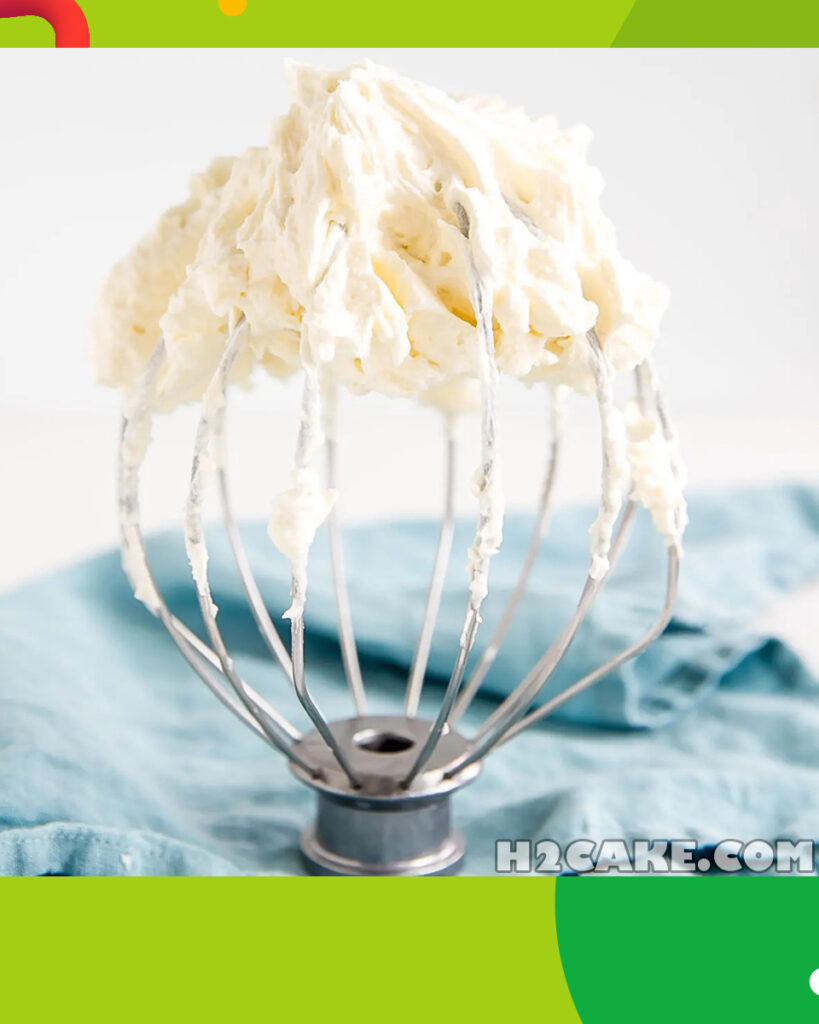
How to serve Ermine Frosting
Ermine Frosting is a versatile frosting that can be served in various ways depending on your preference and the type of dessert you’re preparing. Here are some serving suggestions:
- Frosted Cakes: Ermine Frosting is commonly used to frost layer cakes. After you’ve prepared and cooled your cake layers, spread a generous layer of Ermine Frosting between the layers, then cover the entire cake with the frosting. You can leave it smooth or create decorative designs using a spatula or piping bag.
- Cupcakes: Ermine Frosting is an excellent choice for topping cupcakes. You can use a piping bag to create beautiful swirls or other decorative patterns. Garnish with sprinkles, grated chocolate, or fresh berries for added appeal.
- Cookies: Frost sugar cookies or sandwich cookies with Ermine Frosting. It provides a delightful filling for cookie sandwiches and can be tinted with food coloring to match the occasion.
- Dessert Bars: Spread Ermine Frosting on top of dessert bars, such as brownies or blondies, for an extra layer of flavor and creaminess.
- Fruit Tarts: Use Ermine Frosting as a filling for fruit tarts or tartlets. Arrange fresh fruit on top for a visually appealing and delicious dessert.
- Cakes in Jars: Create individual cakes in jars by layering cake cubes or crumbles with Ermine Frosting. This makes for a cute and portable dessert.
- Cake Roll Filling: Spread Ermine Frosting on a sponge cake sheet, then roll it up to make a delicious cake roll. Dust with powdered sugar or cocoa powder for a finishing touch.
- Layered Desserts: Incorporate Ermine Frosting into layered dessert recipes, such as trifles or parfaits, for added creaminess and flavor.
- As a Dip: Serve Ermine Frosting as a dip for fresh fruit, cookies, or graham crackers at parties or gatherings.
- Garnish and Decorate: Use Ermine Frosting to garnish and decorate your desserts. It’s a versatile medium for creating intricate designs, borders, and other decorative elements.
When serving Ermine Frosting, consider the occasion and the flavors of your dessert. You can also customize the frosting with various extracts or flavorings to complement your dessert’s taste profile. Whether you’re aiming for a simple and elegant presentation or something more elaborate, Ermine Frosting can enhance the visual appeal and taste of your desserts.
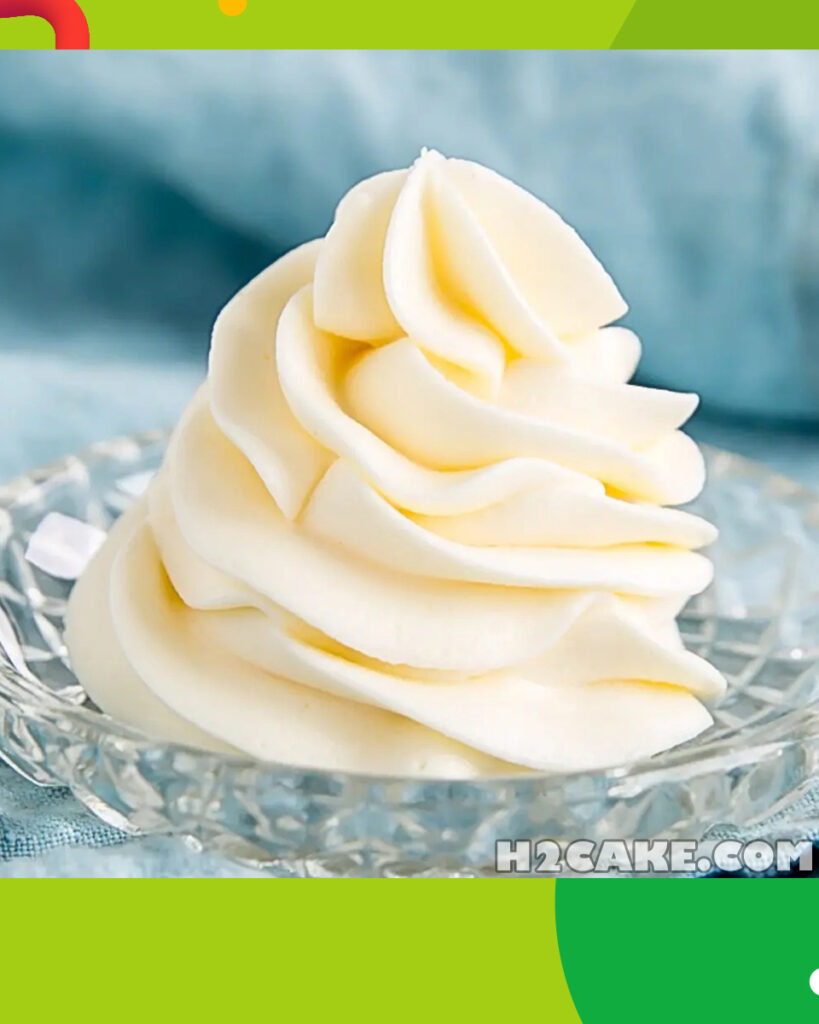
How to store Ermine Frosting
Storing Ermine Frosting properly is essential to maintain its texture and prevent spoilage. Here’s how to store Ermine Frosting:
- Refrigeration: Ermine Frosting contains milk and butter, both of which are perishable ingredients. Therefore, it’s important to store it in the refrigerator if you’re not using it immediately.
- Airtight Container: Transfer the Ermine Frosting to an airtight container with a lid. Make sure the container is clean and dry.
- Cover Surface: To prevent a skin from forming on the frosting, press a piece of plastic wrap or parchment paper directly onto the surface of the frosting before sealing the container with the lid. This creates a barrier that prevents air from coming into contact with the frosting.
- Seal Tightly: Ensure that the container’s lid is securely fastened to create an airtight seal. This helps maintain the frosting’s freshness and prevents any odors from the refrigerator from being absorbed.
- Label and Date: Consider labeling the container with the date you made the frosting. This can help you keep track of its freshness.
- Refrigerate: Place the sealed container of Ermine Frosting in the refrigerator. Store it on a shelf, not in the door, as temperatures on the door can fluctuate more.
- Use Within Timeframe: Ermine Frosting is best used within 3-4 days of preparation. While it may remain safe to eat for longer, its texture and flavor can deteriorate over time.
- Re-Whip Before Use: If the frosting has been stored in the refrigerator, it may firm up slightly. Before using it, allow it to come to room temperature for about 30 minutes, and then re-whip it briefly to restore its creamy consistency.
- Do Not Freeze: Ermine Frosting doesn’t freeze well due to its dairy content, and freezing can affect its texture negatively. It’s best to refrigerate it for short-term storage.
Proper storage of Ermine Frosting helps maintain its quality and prevents it from spoiling. Enjoy using this creamy and versatile frosting on your favorite cakes, cupcakes, and other desserts.
You Might Also Like These Recipes
- The Whipped Cream Cheese Frosting Elegance
- Luscious Cherry Buttercream Frosting
- Exploring Meringue Frosting
- Rich And Silky Chocolate Cream Cheese Frosting
Tips to make perfect Ermine Frosting
Creating perfect Ermine Frosting requires attention to detail and some helpful tips to ensure a smooth, creamy, and delicious result. Here are some tips to help you make perfect Ermine Frosting:
- Use Quality Ingredients:
- Start with high-quality butter and whole milk. Quality ingredients can significantly impact the flavor and texture of the frosting.
- Measure Accurately:
- Use precise measurements for the flour, sugar, and other ingredients. Even slight variations can affect the frosting’s consistency.
- Cook the Roux Properly:
- When making the roux, cook it until it reaches the consistency of thick pudding. This ensures that it thickens properly and eliminates any starchy taste.
- Cool the Roux Completely:
- Allow the roux to cool to room temperature before incorporating it into the butter and sugar. Cooling prevents graininess in the frosting.
- Soften the Butter:
- Make sure the butter is softened to room temperature before beating it. Softened butter blends more easily and creates a smoother frosting.
- Beat the Butter and Sugar Thoroughly:
- Cream the butter and sugar until the mixture is light, fluffy, and pale in color. This helps create a creamy base for the frosting.
- Incorporate the Roux Gradually:
- Add the cooled roux to the butter-sugar mixture a little at a time. Beat it in thoroughly before adding more. This gradual process ensures a smooth and lump-free frosting.
- Use the Right Equipment:
- An electric mixer (stand mixer or hand mixer) is recommended for beating the butter and sugar and for mixing the frosting. It provides a consistent and smooth result.
- Flavoring Options:
- Customize the frosting by adding your preferred flavor extracts, such as vanilla, almond, or citrus. Start with a small amount and adjust to taste.
- Consistency Adjustments:
- If the frosting is too thick, you can add a small amount of milk, one tablespoon at a time, until you reach your desired consistency. If it’s too thin, add a bit more powdered sugar.
- Re-Whip if Needed:
- If the frosting has been stored in the refrigerator and becomes slightly firm, allow it to come to room temperature for about 30 minutes, then re-whip it briefly to restore its creamy texture before using.
- Keep it Cool:
- Ermine Frosting should be stored in the refrigerator when not in use due to its dairy content. Ensure it’s well-covered to prevent any off-flavors from developing.
- Practice Patience:
- Take your time with each step of the process, from cooking the roux to beating the frosting. Patience and attention to detail yield the best results.
By following these tips and techniques, you can create perfect Ermine Frosting that’s silky, flavorful, and an ideal complement to your favorite cakes and desserts.

FAQ’s
Q1: My Ermine Frosting is too runny. What should I do?
A: If your frosting is too runny, it may be due to warm ingredients or overmixing. Try the following:
- Refrigerate the frosting for 15-30 minutes to allow it to firm up slightly.
- If it’s still too runny, you can add more powdered sugar, a tablespoon at a time, until it reaches your desired consistency.
Q2: Can I use salted butter in Ermine Frosting?
A: It’s recommended to use unsalted butter in Ermine Frosting so you have better control over the salt content. However, if you only have salted butter, you can use it but reduce or omit any additional salt in the recipe to avoid making the frosting too salty.
Q3: My Ermine Frosting has small lumps. How can I fix this?
A: Small lumps can form if the roux is not smooth or if the ingredients are not well-mixed. To fix this:
- Ensure that the roux is completely smooth before adding it to the butter-sugar mixture.
- Mix the frosting thoroughly after adding the roux, and use a sieve to strain out any remaining lumps if needed.
Q4: Can I color Ermine Frosting with food coloring?
A: Yes, you can color Ermine Frosting with food coloring to achieve the desired shades for your cake decorations. Use gel or paste food coloring for vibrant and consistent results.
Q5: How long can I store Ermine Frosting in the refrigerator?
A: Ermine Frosting can be stored in the refrigerator for up to 3-4 days when properly covered and stored in an airtight container. Make sure it’s well-sealed to prevent any absorption of odors from the fridge.
Q6: Can I freeze Ermine Frosting?
A: Freezing Ermine Frosting is not recommended. The texture can change when frozen, leading to potential separation or graininess upon thawing. It’s best to refrigerate it for short-term storage.
Q7: My frosting turned out too sweet. How can I reduce the sweetness?
A: If your Ermine Frosting is too sweet, you can try the following:
- Add a small pinch of salt to balance the sweetness without affecting the texture.
- Gradually incorporate more unsalted butter to dilute the sweetness while maintaining the frosting’s consistency.
Q8: Can I re-whip Ermine Frosting after it has been refrigerated?
A: Yes, you can re-whip Ermine Frosting after it has been refrigerated to restore its creamy texture. Allow it to come to room temperature for about 30 minutes, then re-beat it briefly until smooth before using.
Q9: Can I make Ermine Frosting in advance and store it in the refrigerator for later use?
A: Yes, you can make Ermine Frosting in advance and store it in the refrigerator for a few days. Just make sure it’s well-covered to prevent drying or absorption of odors from the fridge.
These FAQs and troubleshooting tips should help you navigate common issues and ensure that your Ermine Frosting turns out perfect and delicious for your cakes and desserts.
Nutrition information
Ermine Frosting, also known as cooked flour frosting or boiled milk frosting, is primarily made with butter, sugar, milk, and flour. Because it’s primarily composed of these ingredients, its nutritional content is similar to other buttercream-type frostings. Here’s a general estimate of the nutrition information for a typical serving of Ermine Frosting (about 2 tablespoons):
- Calories: Approximately 120-140 calories per serving
- Total Fat: 8-10 grams
- Saturated Fat: 5-7 grams
- Cholesterol: 20-30 milligrams
- Sodium: 15-20 milligrams
- Total Carbohydrates: 12-14 grams
- Sugars: 11-13 grams
- Protein: 0-1 gram
Please note that these values are approximate and can vary depending on factors such as the specific recipe, portion size, and variations in ingredient brands. The values listed here are for Ermine Frosting without any added flavorings or colorings.
Ermine Frosting is a rich and indulgent frosting, so it’s typically enjoyed in moderation as a topping for cakes, cupcakes, or other desserts. If you have specific dietary concerns or restrictions, it’s a good idea to adjust the recipe or portion size accordingly to fit your dietary needs.

